SIGGRAPH 1990: Digital Image-Digital Cinema
Chair(s):
Location:
Dallas, Texas, United States of America
Dates:
August 6th-10th, 1990
Art Show Overview:
The SIGGRAPH ’90 Conference Committee welcomes you to “Digital Image-Digital Cinema”, The SIGGRAPH ’90 Art Show. The art show committee solicited works that demonstrate both aesthetic quality and a significant use of the computer. In these works either the computer is used in the dynamic generation of the artwork or in the viewers’ interaction with the artwork or it contributes to the presentation environment.
The show features paintings, prints, photographs, books, sculptures, environments, interactive installations and videotapes representing a large international community of artists who use the computer in their artistic practice. The jury selected 80 works from among the several thousand submitted. Artists from Austria, Canada, France, Japan, the United Kingdom and the United States are represented in the art show.
Artists, historians, educators, scientists and critics have submitted essays that address the theme “Digital Image-Digital Cinema”. These authors present a wide range of views regarding the ways in which the computer extends the practice of art, the study of art or its meaning and context.
The SIGGRAPH ’90 Art Show is made possible through the collective effort of artists, authors, jurors, reviewers and a large number of volunteers. The exhibition demonstrates the vitality of this community and a concern for the computer’s role in both artistic innovation and conservation. This community is active and searching, as evidenced by its work. Welcome to the 10th Annual SIGGRAPH Art Show.
Thomas E. Linehan
SIGGRAPH ’90 Art Show Chair
Committee(s):
- Paul Brown
-
- Sussex University
- Michael Ester
- Isaac Victor Kerlow
-
- Earth Observatory of Singapore
- Pratt Institute
- Columbia University
- Susan Kirchman
-
- Texas A&M University
- Randolph M. N. McAusland
- Thomas E. Linehan
- Patric D. Prince
-
- California State University
- Mark Resch
-
- Rensselaer Polytechnic Institute
- Chris Wedge
- Patric D. Prince
-
- California State University
- Paul Brown
-
- Sussex University
General Committee:
Additional Committees:
Art Papers Reviewers:
- Susan Amkraut
- Patricia Baker-Sizemore
- Mohamed Aziz Chafchaouni
- Donna J. Cox
- Acha Debela
- Linda Ettinger
- Richard Helmick
- Hillary Kapan
- Isaac Victor Kerlow
- Robin King
- Douglas Kingsbury
- Maria Palazzi
- Mark Resch
- Marla Schweppe
- Jon W. Sharer
- Ray Thorburn
Additional Information:
The theme selected for this supplemental issue of Leonardo is, in part, an acknowledgment of the lack of appropriate language to describe the diverse ways the computer is used in artistic practice. This artistic practice is progressively leading us through a continuum of digital variation. Static images, moving images, interactive images-all are being rendered as digital versions of their former selves. The hyphenated theme “Digital Image-Digital Cinema” is meant to suggest this continuum of practice. Many professional artists and filmmakers are pushing aside the traditional boundaries associated with earlier methods and strategies for work.
ACM-SIGGRAPH has sponsored art exhibitions for the past 10 years. These SIGGRAPH art shows have become an important venue for visual artists who are using digital processes in their work. Much of the early defensiveness relating to the computer and art is now fading away. Earlier fears that the computer would mechanize, standardize or trivialize aesthetic values have not proved to be valid. The art community is truly in an exploratory mode with digital processes. The artists selected for the Digital Image-Digital Cinema exhibition have found that digital means extend their artistic reach. The variety and strength of the work in the exhibition demonstrate the power of these digital means and the mastery of the artists who use them.
The authors selected for this catalog chronicle this continuum and variety of artistic practices. The research methods employed by the authors vary from the theoretical to the empirical. The articles examine issues as diverse as the role of digital imagery in art-historical practice (Michael Ester), the degree to which early film theory accounts for current practice in digital cinema (John Berton) and the role that prior knowledge (based on earlier forms) has on our conceptions of the possible in digital imagery (Beverly Jones). Also in this issue Rudolf Arnheim extends his early work in film theory with a new English translation of work originally published in German in 1932. Peter Voci explores the use of the digital image in facial reconstruction for forensic purposes. The strength of the writing and of the artistic practice are found in their diversity.
Thousands of artists worldwide are exploring digital processes for artistic purposes. The SIGGRAPH ’90 Art Show presents the work of many of these professionals who are defining the character and nature of a digital art movement. Artists are testing these new means, digital processes, to see if they can extend their purposes. It is likely not only that such an investigation will uncover new ‘means’ for traditional ‘ends’ but also that new artistic ends will become available to the artist.
Thomas E. Linehan
SIGGRAPH ’90 Art Show Chair
Exhibition Artworks:
-

#1A
[Chantal Zakari]
Categories: [2D & Wall-Hung] -
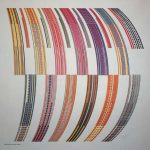
4 A 90
[Mark Wilson]
Categories: [2D & Wall-Hung] -

A Pack of Martyrs
[Michael Kerbow]
Categories: [3D & Sculpture] -

A Song for Africa
[Acha Debela]
Categories: [2D & Wall-Hung] -
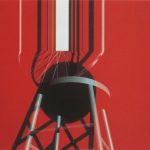
Abstract Matters
[Uri Dothan]
Categories: [2D & Wall-Hung] -
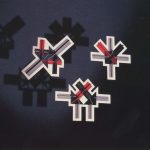
Air-Ohs
[Charles Chiles]
Categories: [3D & Sculpture] -
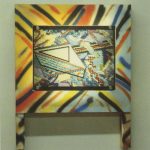
Bermuda Triangle
[Robert Martin]
Categories: [2D & Wall-Hung] -
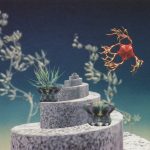
Beyond the Time
[Midori Kitagawa De Leon]
Categories: [2D & Wall-Hung] -

Carpet Box
[Roger Dade]
Categories: [2D & Wall-Hung] -
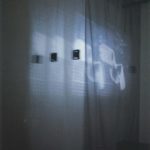
Ceci n'est pas un oiseau
[Simon Penny]
Categories: [Installation] -
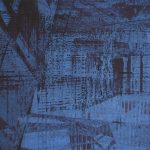
City Dreams
[Heidi Tikka]
Categories: [2D & Wall-Hung] -

Computer Plant Form 3
[William Latham] [Peter Quarendow]
Categories: [2D & Wall-Hung] -

Computer-Generated Photo
[Peter Feldstein]
Categories: [2D & Wall-Hung] -

Cyber Dada Manifesto
[Troy Innocent] [Dale Nason]
Categories: [2D & Wall-Hung] -
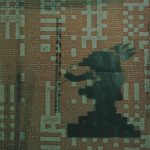
Cyber Dada Performance Poster
[Dale Nason]
Categories: [2D & Wall-Hung] -
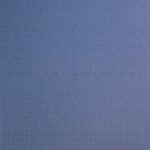
Cyrene
[Kent Rollins]
Categories: [2D & Wall-Hung] -
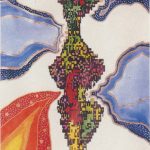
Darryla
[Helen M. Klein]
Categories: [2D & Wall-Hung] -

Decaying Infrastructure
[Lane Hall]
Categories: [2D & Wall-Hung] [Artist Book] -

Delicraft Curio
[Semannia Luk Cheung]
Categories: [3D & Sculpture] -

Exhibition Experiment #5
[Robert Hamilton Jr.]
Categories: [2D & Wall-Hung] -
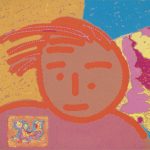
Face
[Thomas Plazibat]
Categories: [2D & Wall-Hung] -

Fifth
[George S. Roland]
Categories: [2D & Wall-Hung] -
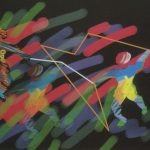
Fight
[Micha Riss]
Categories: [2D & Wall-Hung] -

Firerim
[Paul Berger]
Categories: [2D & Wall-Hung] -
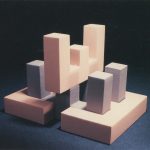
Five Ease
[Charles Chiles]
Categories: [3D & Sculpture] -

Forest Devils' Moon Night
[Kenneth Snelson]
Categories: [2D & Wall-Hung] -
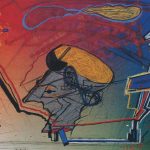
Franz
[Johann Jascha]
Categories: [2D & Wall-Hung] -
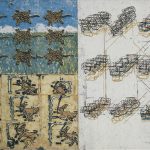
Freedom and Imprisonment
[Isaac Victor Kerlow]
Categories: [2D & Wall-Hung] -
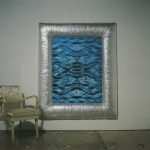
Grace
[Jennifer Steinkamp]
Categories: [Installation] -
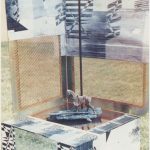
Hero Horse
[Ana Z. Ursyn]
Categories: [3D & Sculpture] -
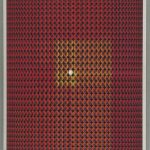
Hidden Symmetry Series (Variation #13)
[James Watkins]
Categories: [2D & Wall-Hung] -
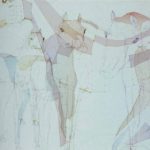
Horse Study
[Andrea Losch]
Categories: [2D & Wall-Hung] -

House #2
[Sydney Cash]
Categories: [3D & Sculpture] -

House of Virtue
[Sydney Cash]
Categories: [3D & Sculpture] -

JF60 (With My Mother's Eyes)
[Carol Flax]
Categories: [2D & Wall-Hung] -
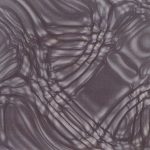
Laque Noire
[Jean-Pierre Hébert]
Categories: [2D & Wall-Hung] -
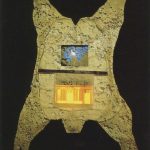
Le Café de L'Abattoir
[Joseph Lefevre]
Categories: [Installation] -
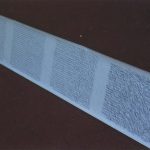
Letters of My Mother
[Vera Molnar]
Categories: [2D & Wall-Hung] -
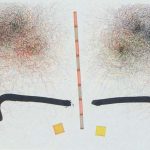
Lung Shan II
[Roman Verostko]
Categories: [2D & Wall-Hung] -
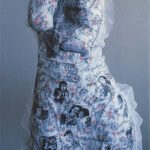
Making Cheesecake
[Patricia Hoffman]
Categories: [3D & Sculpture] -
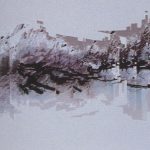
Mare
[Cynthia King-Judge]
Categories: [2D & Wall-Hung] -
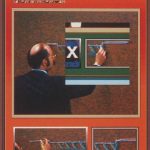
Mathguy
[Paul Berger]
Categories: [2D & Wall-Hung] -

Movement Without Motion
[David Heeger]
Categories: [Animation & Video] [Installation] -
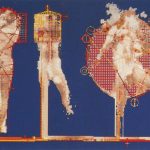
Mutation-Cir
[Don P. Miller]
Categories: [2D & Wall-Hung] -
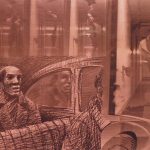
Night Flow
[Sandro Corsi]
Categories: [2D & Wall-Hung] -
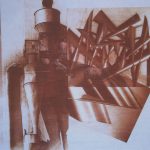
Ohio Fieldwarp
[Craig A. Johnson]
Categories: [2D & Wall-Hung] -

One Day of Cassy
[Motonori Sakakibara]
Categories: [2D & Wall-Hung] -
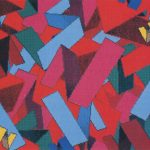
Orangez
[George S. Roland]
Categories: [2D & Wall-Hung] -
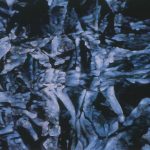
Paint Out No. 19 Revolution
[Rodney E. J. Chang]
Categories: [2D & Wall-Hung] -
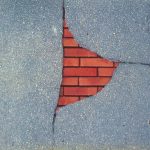
Photo Finish at the Brickyard
[Alvy Ray Smith]
Categories: [2D & Wall-Hung] -
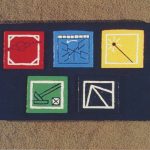
Pocket Visualization
[Mark Bajuk]
Categories: [2D & Wall-Hung] -
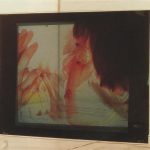
Portrait of Ellie
[Lily Diaz-Kommonen]
Categories: [3D & Sculpture] -

Religion
[Copper Frances Giloth]
Categories: [2D & Wall-Hung] -
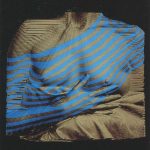
Robert Mapplethorpe/The Nineties
[(art)n Laboratory]
Categories: [2D & Wall-Hung] -
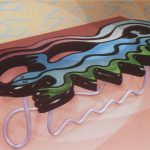
Salamander Coffee Table
[Brad Gianulis]
Categories: [2D & Wall-Hung] -

Sand Rattles
[Kathleen La Salle]
Categories: [3D & Sculpture] -
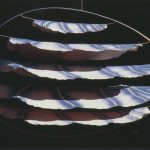
Scarab
[Susan Hamilton]
Categories: [3D & Sculpture] -
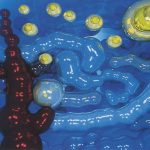
Second Night
[David E. Breen]
Categories: [2D & Wall-Hung] -
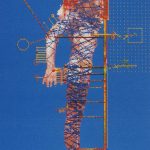
Sentinel #1
[Don P. Miller]
Categories: [2D & Wall-Hung] -
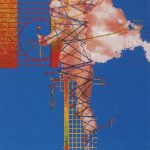
Sentinel #2
[Don P. Miller]
Categories: [2D & Wall-Hung] -

Sky 15C
[Kazuya Sakai]
Categories: [2D & Wall-Hung] -
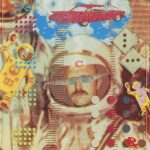
Spaceman
[Charles B. Murphy]
Categories: [2D & Wall-Hung] -
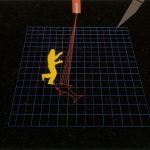
Step Lightly
[Myron W. Krueger]
Categories: [Interactive & Monitor-Based] -

Sunwall
[John S. Banks]
Categories: [2D & Wall-Hung] -
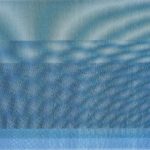
Swarm
[Eudice Feder]
Categories: [2D & Wall-Hung] -
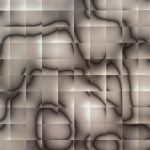
Symbiosis
[Bruce Lindbloom]
Categories: [2D & Wall-Hung] -

Synergetic Globes
[Shinya Yusa]
Categories: [3D & Sculpture] -
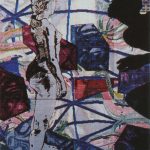
Tara y Cosimo
[David Glynn]
Categories: [2D & Wall-Hung] -
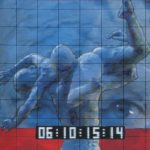
Terrain:06:10:15:14
[Gregory P. Garvey]
Categories: [2D & Wall-Hung] -
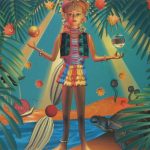
The Balance
[Yuriko Amemiya]
Categories: [2D & Wall-Hung] -
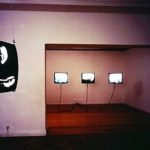
The Bernoulli Itinerary
[Alexander Hahn]
Categories: [Animation & Video] -
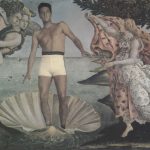
The Birth of Elvis
[Richard W. Maile]
Categories: [2D & Wall-Hung] -
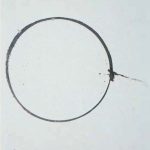
The Circle
[Kamran Moojedi]
Categories: [2D & Wall-Hung] -
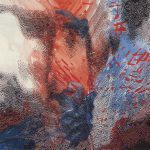
The Wall Pieces
[Pat Lawler]
Categories: [2D & Wall-Hung] -
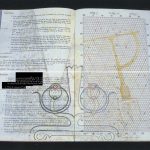
Traveller
[Lane Hall]
Categories: [2D & Wall-Hung] [Artist Book] -
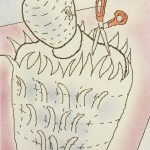
Under Wraps
[Barbara Nessim]
Categories: [2D & Wall-Hung] -
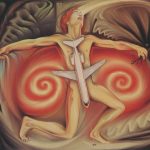
Unloading
[Erol Otus]
Categories: [2D & Wall-Hung] -
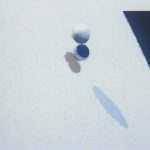
Untitled
[Anne Russell]
Categories: [2D & Wall-Hung] -

Untitled
[David Durlach]
Categories: [3D & Sculpture] -

Untitled
[Eva K. Sutton]
Categories: [2D & Wall-Hung] -
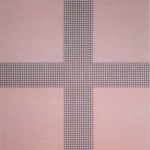
Untitled
[Kent Rollins]
Categories: [2D & Wall-Hung] -
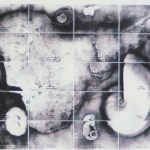
Untitled
[Sheila Pinkel]
Categories: [2D & Wall-Hung] -
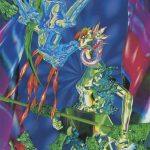
Vision d'une Schizophrene #2
[Ryoichiro Debuchi]
Categories: [2D & Wall-Hung] -
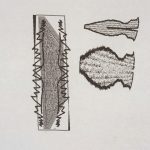
Wait/Weight (Triptych)
[Kathleen Kirka]
Categories: [2D & Wall-Hung] -
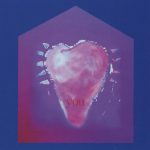
You
[Karen Hillier]
Categories: [2D & Wall-Hung]
Exhibition Writings and Presentations:
-
Title:
Computer Graphics as Allegorical Knowledge: Electronic Imagery in the Sciences
Author(s):
Category: Paper
Abstract Summary:
This informal paper studies the effects of the recent introduction of computer-generated imagery on the practice of science and its function in understanding the world. It intends to introduce the subject of computerized visualization for scientific purposes into a wider debate, to show the diversity of issues involved-scientific, cultural and philosophical-and to build a context in which they can be critiqued. The author seeks to show the variety of scientific imaging and its influences on scientific knowledge; as both experiments and results are increasingly expressed in terms of imagery, the image assumes an integrity of its own and the object to which it refers becomes obscured. This leads to a shift of focus away from abstract theory as the embodiment of knowledge to the ascension of an allegorical image-based science with computer graphics as its natural language.
[View PDF]Title: Computer Graphics: Effects of Origins
Author(s):
Category: Paper
Abstract Summary:
New forms of art and technology are frequently cast in the mode of old forms, just as other aspects of material and symbolic culture have been. Only when these new forms become available to the larger population can they affect cultural patterns of maintenance and change. The author traces the evolution from alphanumeric hard copy, static and dynamic screen images, through objects and events that are not screen-based, to dynamic, interactive, multi-sensory output. The effects of origins and prior practices in both technology and art on form, content, material, technique, meaning and purpose of computer graphics are explored. Speculation regarding possible and probable futures are raised.
[View PDF]Title: Digital Dilemmas
Author(s):
Category: Paper
Abstract Summary:
Computer imagery is fraught with divers conundrums and paradoxes associated with the fact that it is both abstract and concrete. It confounds familiar ways of understanding appearance and reality. We can begin to resolve the perplexity by using the idea of recursion to contrast digital imaging with picturing. It is particularly useful to explore the concept of an interface and to study its role in the imaging system. Digital images cannot be understood outside the context of the complete interactive system in which they occur.
[View PDF]Title: Digital Image-Digital Cinema: The Work of Art in the Age of Post-Mechanical Reproduction
Author(s):
Category: Paper
Abstract Summary:
Computers are transforming existing art forms and allowing new kinds of art forms to be developed. Because the computer is primarily a machine for processing information, not a machine for making objects, it provides a malleable medium that provides the artist with a large variety of tools for manipulating sense data. The work that contains the result of the artist’s creativity is the software and the data, not any particular image or output produced using that software. The ultimate goal of artmaking using computers, in this light, is not to create art objects but to create dynamic art subjects, to produce families of aesthetically interesting outputs, or art performances, which are as different from each other as possible within the constraints of the software. This situates computer art within a larger context of the study and development of artificial life. To create significant artworks of this type, it will be necessary to improve the computer’s capacity to be an autonomous artmaking subject; this will require the extension of the computer’s senses, the expansion of its capabilities, and means for the computer to provide sensory inputs to the human nervous system and to other computers.
[View PDF]Title: Digital Image-Digital Photography
Author(s):
Category: Paper
Abstract Summary:
The SIGGRAPH 1990 Art Show Committee decided to sponsor an exhibition of works that concentrate on the interaction of photographic imagery and computer technology [1]. This exhibition came about because of one interesting aspect of computer-mediated artworks that has been developing over the last several years. As the curator of this exhibition, I chose to put together a group of works that investigate not only the technical combination of these media but also the conceptual basis for choosing such tools of investigation, collaboration and production.
[View PDF]Title: Film Theory for the Digital World: Connecting the Masters to the New Digital Cinema
Author(s):
Category: Paper
Abstract Summary:
This article examines the role that theories of photographic cinema play in the criticism of digital cinema. The theories of Georges Melies, Vachel Lindsay, Lev Kuleshov, Andre Bazin and Rudolf Arnheim-critics, theoreticians and filmmakers, the key-stones of this work-have proven pertinent to the advancing technology of other cinematic forms. Their ideas have applicability to specific aspects of digital cinema, including the manipulation of illusory space, discrete and explicit control of cinematic elements, the transformation of world spaces into screen space and the role of realistic imagery in determining the content of a cinematic work. Parallels can be drawn between the ideas of these theorists, most of whom wrote during the infancy of photographic cinema, on the developing state of film and that of current digital cinema.
[View PDF]Title: Image Quality and Viewer Perception
Author(s):
Category: Paper
Abstract Summary:
Improving the quality of digital images can have great impact on information storage and transfer, pushing the feasibility of image databases well beyond existing practical limits. How good do images have to be? Among the considerations for selecting image quality is the extent to which viewers can discriminate among variations in quality. What differences in resolution and dynamic range (bit-depth) can they see? Groups of art historians were asked to rate a series of displayed test images; the results show how participants’ responses compared with the actual range of image quality. Practical implications of viewers’ perceptions are discussed.
[View PDF]Title: Language and the Early Cinema
Author(s):
Category: Paper
Abstract Summary:
The following short excerpt from Film [1] is all but unknown to the readers of the English version of the book as well as to those of the other translations. The edition of 1957, titled Film As Art [2], on which all these translations are based, was prepared by the author in the conviction that only the essential sections, dealing with the nature of the visual medium, were still relevant whereas much of what had been observed in the infancy days of the sound film was no longer worth saying. A complete English version of the German original of 1932 had been published in 1933 by Faber and Faber in London in a translation by L. M. Sieveking and Ian F. D. Morrow but has vanished of course long ago even from most libraries. The following few pages, slightly retouched by the author, will give today’s readers a taste of the principles that governed discussions of the media in those early days.
[View PDF]Title: Not-Art Digital Images: An Artist's Perspective
Author(s):
Category: Paper
Abstract Summary:
Working with the New York State Police and the Nassau County Medical Examiners Office, a forensic anthropologist, a forensic medical photographer and an imaging systems artist attempted to reconstruct a face from the skull of a young woman. Facial feature components selected from police identification kits were digitized and manipulated to match control points and overlaid onto a digitized version of the skull. In this way a series of images was created that were called ‘not-art’ even though an artistic aspect was present.
[View PDF]Title: Temporal Coherence with Digital Color
Author(s):
Category: Paper
Abstract Summary:
To structure time with abstract visual materials requires a visual grammar of line, shape and color. Color is especially problematic, difficult to measure in all but the simplest applications; the literature of color theory and harmony is often confusing. To devise a syntax for structuring time with color, one can turn to the concepts of tension-release, of neutral, balanced and weighted color domains and of discrete computer raster images; they help to create and measure time-based color compositions. In para-metrically defined color palettes, Color Study #7 (a computer-generated animated film) demonstrates the application of these ideas to a simple and effective compositional approach. Codifying this now common film-making practice, the author hopes to encourage others interested in aesthetically strengthened visual presentation to explore and develop time-based visual grammars.
[View PDF]Traveling Art Show Chair(s):
- Patric D. Prince
-
- California State University
Traveling Art Show Information:
Computer animation from the “Digital Image/Digital Photography: The 1990 SIGGRAPH Traveling Art Show” exhibit while it was at The Computer Museum in Boston from October 23, 1990 to February 1, 1991




